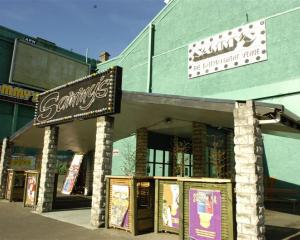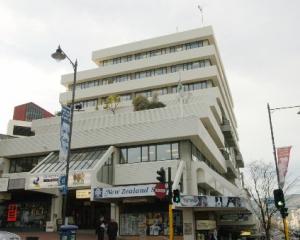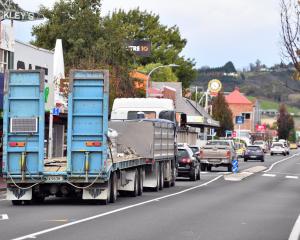
The Dunedin City Council has been working with the University of Otago, the New Zealand Transport Agency (NZTA) and the Otago Regional Council on the issue, and council staff plan to take the results of their work to councillors later this year.
But those staff will first consider whether the initial drivers of a project that has been in the pipeline for five years are still valid.
And with no money set aside for the project in the council's annual plan, any argument for a cash-strapped council to adopt any or all of the project will have to be strong.
Council acting transportation planning manager Sarah Connolly yesterday said she wanted public input on the project, and for the council to consider what its priorities were in the area.
She stressed the project was very much at a concept stage: many details remained to be considered, and the council had yet to make any decisions. The harbour arterial route project was first mooted in the council's transportation strategy, released in 2006.
It was intended to send traffic behind the Dunedin Railway Station, northbound traffic travelling alongside the rail corridor, and then along Frederick St, before linking with the one-way system north at Cumberland St.
Southbound traffic could still use Cumberland St, though no final decision had been made. In 2008, former transportation planning manager Don Hill said the project would help solve congestion on city roads, and help deal with expected growth in population and vehicle numbers.
Since then, changes to intersections at each end of Strathallan St had been completed, and the $24.7 million realignment of State Highway 88 past the Forsyth Barr Stadium had progressed.
Ms Connolly said now that was done, the city needed to decide "Where do we go now?"
Consultant MWH was at a "high-level concept stage" of looking at the roading corridor.
That work had indicated an arterial route along Thomas Burns St may be appropriate for heavy traffic.
Crawford St could revert from a one-way system to a two-way system south of Queens Gardens and return to council ownership, allowing better access to heritage buildings in the area.
Cumberland St would remain part of State Highway 1. Of all the ideas, that was "the more encouraging", she said.
"There is a mixture of views at staff level whether that would be good or not," Ms Connolly said.
But the benefits for Crawford St would include slower traffic, allowing better use by cyclists and pedestrians, and a better connection between the city and Queens Gardens, which at the moment was separated by heavy traffic.
Apart from anything else, it would not be an expensive option.
"We also need to consider whether this is a priority," Ms Connolly said. "We can't answer that without talking to the community."
The groups involved would consider the ideas themselves, then return for more meetings, and a report was expected to go to a council committee later this year.
Council finance, strategy and development committee chairman Cr Syd Brown said money in the council budget for strategic routes had been used to pay for the State Highway 88 realignment.
"Therefore, there's no budget at this stage."
Cr Andrew Noone, who has taken over the strategy as chairman of the infrastructure services committee, said it was intended to be a 50-year vision.
The NZTA did fund state highways, but in a case like this, where the benefits were to a city rather than being a national priority, the approval for, and level of funding were subject to negotiation.












